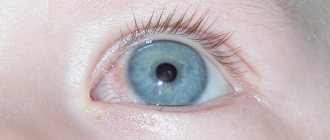We all remember the wonderful Soviet film “Scarecrow” about the girl Lena Bessoltseva, who became a victim of aggression and psychological pressure from her classmates. Fans of American cinema may recall on this topic the film “Carrie” based on the novel by Stephen King, where the main character, due to her extraordinary appearance and psychological characteristics, becomes the object of bullying and cruel jokes from her peers.
Worried that your child is being bullied at school? Prove the fact of bullying and help your child by using the Sound Around function in the “Where are my kids” application, downloading it from the AppStore or GooglePlay.
All this is about bullying at school - bullying, intimidation, bullying. The word is new, the phenomenon is old. According to UN data from 2006, every tenth schoolchild in the world is exposed to violence at school, and this figure is growing every year. In the media, we are increasingly seeing frightening headlines: “teenagers posted a video online of beating a classmate,” “a girl committed suicide due to bullying at school.”
The problem of bullying is modern and acutely social. You can’t turn a blind eye to it, because children’s cruelty sometimes goes beyond all acceptable limits.
This article is for parents, children, teachers, for those who have had to deal with bullying at school and for those who want to protect their child from this horrific phenomenon of our time.
Content:
- Bullying as a type of violence What is bullying
- Types of bullying
- School bullying today - features
- Schoolshooting as a result of bullying
- Victim
- What should a child who is a victim of bullying do?
What can bullying be like?
- Violence can take physical and psychological forms.
- Physical violence takes the form of force (beatings, beatings) or manifests itself in damage to property.
- Psychological violence is a more insidious method that affects a person’s moral and emotional state. The team can influence the psyche of a teenager with name-calling, verbal humiliation, boycotts, intimidation and threats for a long time.
- Currently, cyberbullying is widespread, bullying is carried out via the Internet.
- Sexual violence is highlighted separately, where there is coercion to commit any acts of a sexual nature. As practice shows, not only teenagers, but also children become targets of violence. Danger can come from both classmates and adults.
A short film on the topic of bullying at school. This is a touching video, when you watch it, you feel sorry for the person who is being bullied in real tears. It's terrible, but such stories happen in almost every classroom. After all, in any class there is someone who does not behave like everyone else. And the team, as a rule, takes this with hostility. Our story is about a boy who simply told the truth, but his classmates took it completely differently and bullying began at school:
Bullying as a type of violence
What is bullying
The concept of “bullying” (from the English bullying - intimidation, persecution) appeared in the 20th century. But it acquired modern significance relatively recently, thanks to the author of the book “Bullying at School,” Norwegian psychology professor Dan Olweus.
Bullying is a type of violence that involves aggressive persecution of one of the team members by another or a group of people.
The professor conducted the first study among schoolchildren in Norway and Sweden on issues of school bullying. It turned out that 15% of children regularly face situations of bullying, 9% of respondents are victims, 7% are aggressors, and 2% act in both roles.
But here is the data from a modern study conducted in the United States in 2016: 13% of schoolchildren were subject to verbal bullying, 12% became objects of gossip, 5% were subjected to physical violence and 5% were excluded from communication.
The same psychological violence in the form of bullying, boycott, denunciation, but in an adult group, is called mobbing. Research in this area shows that 135 out of 180 employees of Russian companies were subjected to mobbing more than once during their working career.
Types of bullying
What types of bullying are there?
- physical – direct physical actions towards the victim (pushes, kicks, beatings, sexual harassment);
- verbal – threats, insults, ridicule, humiliation;
- socio-psychological – bullying aimed at social exclusion or isolation (gossip, rumors, ignoring, boycott, manipulation);
- economic – extortion or direct taking of money, things, damage to clothing;
- cyberbullying (from English - cyberbulling) or Internet bullying - bullying on the Internet through social networks, email. Involves spreading rumors and false information, hacking personal pages, sending negative messages and comments. It is the youngest and most dangerous type of bullying, since it is very difficult to defend against it and find the sources where the threat comes from. There was even such a concept as bullicide - suicide committed due to bullying on the Internet. The most famous case occurred in the USA in 2006. A mother, together with her thirteen-year-old daughter, harassed a minor acquaintance on the MySpace social network under a fake profile. The girl could not stand the bullying and committed suicide.
School bullying today
What are the features of modern bullying? First of all, bullying occurs mainly on the Internet. Nowadays, social networks and various instant messengers are popular, where under a fake profile or nickname you can write anything to anyone. Many teenagers take advantage of this, confident in their own impunity - that they will not be held accountable for their actions. Schoolchildren send aggressive or indecent videos and photos, and write offensive comments.
Another fact that attracts attention is the participation of girls in bullying. If previously the overwhelming majority of aggressors were boys, now the ratio is approximately 50 to 50. Girls are increasingly taking part in physical bullying. As an example, the case of 2021. In St. Petersburg, schoolgirls brutally beat their classmate, filmed it and sent it to all their friends. The reason for the reprisal was allegedly the fact that the girl saw her classmates drinking alcohol and told adults about it. The beating victim suffered a broken nose and a severe head injury. All participants in this situation are 13 years old...
And an even more terrible fact is that a teacher can also be subject to bullying in a modern school. If previously students could simply smear glue on the teacher’s chair or plant buttons, today teenagers can insult and humiliate the teacher right during the lesson, spit in the face and even hit.
Worried that your child is being bullied at school? Prove the fact of bullying and help your child by using the Sound Around function in the “Where are my kids” application, downloading it from the AppStore or GooglePlay.
Schoolshooting as a result of bullying
Another phenomenon of the cruel modern world is called schoolshooting. This term refers to the massacre of students, carried out either by a student or by one of the strangers who entered the school. School shooting gained wide publicity after the incident that occurred at Columbine High School in the United States, where on April 20, 1999, two students shot thirteen people at the school and then committed suicide.
The first high-profile case in Russia of an armed attack by a teenager on a teacher occurred in 2014, when a Moscow school student shot and killed a geography teacher and a policeman who arrived at the scene, and also took his classmates hostage.
Most recently, in September 2021, police officers in the city of Kirov managed to prevent a massacre at a school. A teenager was identified who was planning an attack using bladed weapons and homemade explosives. The teenager was interested in the topic of violence on social networks and communicated his intentions in correspondence.
The cases are terrible, the cases are outrageous. But even more terrible is the fact that almost all of those who committed these murders were victims of bullying by classmates. Driven to despair, teenagers took up arms and shot their offenders.
The relevance of the problem of bullying in modern schools
Zaochinsky Mikhail Sergeevich [email protected]
Over the past 40 years, the problem of bullying in school has received more and more attention around the world. David Olweus first described this phenomenon in the 1970s. Although bullying at school is common, in the modern world, and especially in Russia, this problem is not given due attention, it is not studied, not discussed, and they try to hide it.
Bullying is commonly understood as bullying, oppression and discrimination. This is a type of violence when one person or group of people physically, mentally or psychologically attacks or threatens another person. As V. Petrosyants adds, violence occurs against a person who cannot defend himself, and the aggressors have a desire to scare, inflict pain, offend or offend.
An insanely huge number of people have faced this problem, with bullying and ridicule, threats and nagging. It is important to note the fact that both children and teachers take part in school bullying. We can say that children, teachers, parents and other school employees become victims, and all of the above can also be aggressors. In a class where bullying occurs, not only the person being bullied suffers, but also the aggressor, the participants, the teachers, and, in principle, the entire class. Many people see this only as a problem for the child, his family, or the abuser (child-aggressor). But you need to work with the school, with the teachers, because in most cases the child is bullied there.
Thanks to research by the National Research Institute, it was revealed that approximately 35% of children around the world experience bullying, in Russia the statistics are slightly worse and here 52% are bullied or have something to do with it. First of all, this is psychological aggression, which accounts for about 32%, as for physical aggression, be it pushing, kicking or some kind of beating, then it is 26.6%.
Based on the analysis of statistics and studies that were carried out in Russia, the following can be distinguished:
- 38% of schoolchildren experienced bullying at school;
- aggressors are peers (53% of cases), older students (21%) and teachers (26%);
- Primary schoolchildren are bullied in 8% of cases, senior schoolchildren in 31% of cases and secondary school students in 61% of cases;
- parenting style and parental criticism lead to aggressive behavior in children;
- victims of bullying will tell their parents about the incident in 47% of cases, friends in 23% of cases, teachers in 8%, and will not tell anyone in 20% of cases[6].
Most often, according to students, they are bullied for their appearance (43.8%) or their nationality (33.6%). Most importantly, every fifth respondent claims that teachers have shown or are showing aggression towards him, while 65% of respondents consider the atmosphere at school to be friendly.
One of the main problems is that teachers and students often keep silent about this problem, which is why parents find out only in 20% of cases.
According to statistics, only 53% of Russian schools have a school psychologist on their staff. It turns out that there are an average of 800 children per psychologist. According to research results, the training of psychologists is below average; many are simply not prepared for the problems that befall them. A school psychologist does not have the ability to cover all situations and problems that arise at school and in a particular class.
These experts are confident that bullying at school begins with the family, since the majority of children who are bullied at school are also subject to harsh criticism from their parents at home. In addition, researchers also take into account the genetic pattern, proving this by the fact that if the child’s father bullied students at school, then the child also shows some aggression towards people.
Regarding foreign countries and how and to what extent bullying manifests itself. In Great Britain, schools are literally “infected” with an epidemic of bullying; physical violence, insults, and intimidation of children predominate there.
However, if bullying occurs, school directors can go to court and they will choose the punishment for it; parents can be sent to courses on raising and educating children; if they refuse, they will face a fine.
In the United States, not long ago, one in nine out of ten children were bullied because of their sexual orientation. The United States does not shy away from the problem of bullying and is constantly working to find ways to solve it. Any student can approach a psychologist and discuss this issue and get advice, and their dialogue will remain completely confidential. However, not everything is so smooth here; victims of bullying, due to the availability of weapons, can often take revenge on their offenders and cause them damage and injury that are incompatible with life.
In Sweden, since 2006, there has been a position that helps schools prevent bullying and ensure that the dignity of each student is not undermined. In Sweden, it is customary not to fight and stop, but to create and support. The task of adults is to create the most friendly atmosphere in schools, on the street and throughout the country as a whole. At the state level, children are protected by two laws “On Education” and “On the Prohibition of Discrimination.”
According to most scientists, Japan currently has one of the best levels of education; there is a real struggle for places here. In Japan, there have been many cases of children settling scores with themselves due to the fact that they could not stand the competition and they simply continued to be bullied.
In France, a special social network has been created where students can anonymously talk about their problems and experts will help find a solution. Children of migrants are most often exposed to bullying here, just as in Germany they are most susceptible to this problem.
It is customary to identify the following causes of bullying:
- low level of education of the student;
- low self-esteem;
- abuse of various toxic substances;
- constant high aggressiveness of the child;
- increasing status in the team;
- unlimited desire for dominance;
- low performance in subjects;
- deplorable family situation;
- violence in family;
- conflicts in the family:
- low financial situation of the family;
- Parental attitude is overprotective or hypoprotective.
During adolescence and puberty, a child’s whole world, character and thinking changes. Problems of a psychological and physical nature arise, the thoughts and actions of adults are questioned, and a spirit of protest appears. For students with low academic performance, aggression is precisely the means that will help compensate for this academic performance. Aggressors act depending on the following motives: revenge, struggle for power, envy, hostility, self-affirmation, desire to be the center of attention.
Most often, in such a process as bullying at school, the following aspects stand out:
- A victim that absolutely any child and adult can become. Moreover, the risk of becoming a victim is especially high for people who are insecure, lonely, or anxious. Most often, the victim experiences headaches, migraines, depressive disorders and developmental delays. Victims see a world where danger is everywhere.
- Aggressors, whose place is taken by children from authoritarian, dysfunctional families. Such children fall behind in the school curriculum, they are active, strive to take the place of leader and be the center of attention. Remarks, punishments and threats do not stop aggressors at all. Using bullying, they achieve their own goals.
- Witnesses, who can also be called spectators. Such people become eyewitnesses to the process of bullying, because it happens right before their eyes. Although they see everything from the outside, they are also subject to psychological influence. Such people feel fear when they are at school and feel helpless. The role of witnesses can be played by teachers, students, and school staff.
The most common victims of bullying are:
- children with non-standard appearance (scars, squint, weight);
- quiet and weak children;
- flamboyantly dressed and unkemptly dressed;
- informers and sneakers;
- academically unsuccessful;
- children with various diseases (tics, stuttering);
- children with physical disabilities (glasses, hearing aids);
- introverted, shy and self-conscious;
- guys of other nationalities;
- newcomers who have just appeared in the class;
- teachers' pets.
- It is important to say what types of bullying exist:
- emotional abuse (ridicule, threats, rumors, criticism, avoidance, obscene language, emphasis on physical disabilities, insults, notes);
- physical violence (hitting, beating, kicking);
- sexual violence;
- economic violence (damage to property, taking money, extortion);
- cyberbullying (threatening messages, publishing photos on the Internet, anonymous calls, comments on photos).
Bullying at school, as a problem, requires due attention, because bullying has consequences in the lives of victims - these include problems with social development, with school adaptation. Students who have been bullied receive deep psychological trauma that will be remembered forever. Many years after leaving school, when adults come to sessions with a psychologist, they remember bullying, cry, and talk about these traumas. After all, bullying at school affects not only the victims, but also the aggressors and spectators. Children who were bullied at school are five times more likely to experience headaches, psychological disorders, apathy, and attempt suicide.
This problem requires an integrated approach. Not only the student, but all subjects of the educational process must deal with bullying at school. The main advice for those who are faced with this is to get advice from specialists as soon as possible and under no circumstances remain silent about it.
Parents need to go with their child or take him separately to a specialist, and then personally discuss with him and provide support that will help build a trusting relationship.
So, the teacher needs to keep an eye on the children in order to identify a potentially dangerous and problematic situation in time, try to prevent it and definitely help solve it.
Children need to talk about what happened, be confident, persistent, and try to avoid cases of bullying.
The bullying that a person was subjected to at school leaves its mark on his life: it prevents him from building relationships, trying himself in different fields of activity, making friends, and prevents him from reaching the top in his work. That is why it is necessary to pay due attention to the problems of bullying and bullying at school. Both school psychologists, parents, school administration, teachers, and the media should pay attention.
Do you want to write a scientific article? Find out how to do this by reading our material
Causes and motives of bullying
Now let's try to understand the causes and motives of bullying. What makes children be so cruel and aggressive towards their peers?
There are actually many reasons. Let's divide them into groups:
- pedagogical (microclimate of the classroom, school). The position of the teacher plays an important role here. A child is more likely to be bullied in an environment where teachers themselves allow themselves to ridicule and humiliate students. In addition, a teacher can take a third-party position in a bullying situation, knowing about the problem but not interfering with it;
- psychological (personality of the aggressor, the so-called buller, and the victim);
- social (propaganda and encouragement of dominant aggressive behavior in society: on television, on the Internet, computer games);
- family (lack of parental love and attention, physical and verbal aggression on the part of parents, excessive control).
Motives for bullying include:
- envy;
- revenge (when the victim of bullying herself becomes a buller, trying to punish the offenders for the suffering they caused);
- self-affirmation in a team;
- the desire to be the center of attention, to look “cool”;
- the desire to neutralize an opponent by humiliating him.
What is called bullying?
- Physical aggression: beating, damage to a child’s property;
- Verbal aggression, distortion of the child’s name, inventing nicknames, obscene language addressed to the target of bullying.
- Turning a child into an outcast, complete ignorance on the part of other children, making it clear that he does not exist for them. The victim is simply doomed to loneliness.
- Spreading rumors, gossip, false information.
- Another type of bullying is virtual aggression. Offensive messages, distribution of photographs, etc.
Child bullying goes unnoticed for a long time - children are secretive by nature. But sensitive parents will guess about the child’s problems if they pay attention to some characteristic signs.
- The child is unrecognizable - he is sad and thoughtful.
- “Loses” things, money.
- Doesn't communicate with classmates outside of school.
- The older ones withdraw into themselves, while the younger ones, on the contrary, want to be with adults most of the time.
- Bruises, abrasions, scratches, torn clothes are also alarming hints of an unpleasant situation.
- A child pretends to be sick to avoid going to school.
How can you tell if your child is a victim of bullying?
Children cannot always tell adults about their problems at school. Therefore, it is important for parents to recognize in time that their child has become a victim of bullying. The following signs may indicate this:
- the child has a negative attitude towards school and uses every opportunity to avoid going there;
- returns from school depressed;
- often cries for no apparent reason;
- does not tell anything about classmates and school life;
- sleep and appetite disturbances;
- bruises and abrasions on the face or body, torn clothing.
How to deal with cyberbullying?
For children:
- communicate as you would have to speak in person;
- do not get involved in disputes;
- avoid hate speech;
- take screenshots of unpleasant messages and, if necessary, seek help from loved ones.
To parents:
- establish parental control, taking into account the age of the child;
- watch content and play together, discussing with your child how he feels;
- explain what viruses and spam are;
- learn to set strong passwords and not post your location in the public domain;
- do not link a bank card number to your child’s phone;
- do not punish by depriving the Internet, but negotiate limited access.
Who is involved in bullying?
In a bullying situation, the victim, the aggressor and observers usually take part, i.e. participants in bullying. Let's talk about each of these roles.
Victim
There can be absolutely any reason for bullying. The most common victims are children:
- with physical disabilities or developmental disabilities (reduced hearing or vision, cerebral palsy, etc.);
- unsure of themselves, withdrawn, with increased anxiety and low self-esteem;
- with features of appearance (freckles, fatness/thinness, etc.);
- with low intelligence and learning problems;
- “favorites” of teachers or, conversely, outcasts.
What all victims have in common is the inability to resist the offender, to defend themselves, to fight back.
Aggressor
A potential bully is a person:
- with low self-esteem, which he seeks to raise by humiliating others;
- seeking to be the center of attention at any cost;
- aggressive, cruel, prone to dominance and manipulation;
- more often with problems in family and parent-child relationships.
Aggressors can be children both from disadvantaged families and from families with high financial status.
Observers
This is the largest category of participants in school bullying. Bystanders are the people who become involved in the bullying situation. Here, as a rule, there are three options for the development of events.
- Or the observer comes to the victim’s defense, finding himself under attack and risking becoming a new victim (remember the boy from the film “Scarecrow” who defended Lena Bessoltseva).
- Or the observer takes a passive position, intervening in the conflict in no way.
- And the third option is when the observer actively encourages the aggressor and after some time joins him.
In 2010, a study was conducted among high school students in Moscow and Riga on the subject of school bullying. One of the surveys reflected the characteristics of schoolchildren’s assessment of their own behavior in a bullying situation when their classmate becomes the victim. It's interesting to see the results.
As can be seen from the table, a passive-negative attitude towards the situation of bullying (“I sympathize, but will not support”) is more typical for students in Riga schools. In turn, Moscow schoolchildren and those children who study in Russian-language schools in Riga are more inclined to protect and support the victim of bullying. There is also a large percentage of those schoolchildren who withdraw from the situation (“I won’t pay attention to it”).
Causes of bullying at school
Outcast is a word that originated in Ancient Rus'. Since ancient times, this was the name given to people who fell out of their social environment. Now he is a person persecuted and ignored by the collective or deprived of some rights.
If a teenager finds himself in such a situation, he immediately has a question: how could this happen, and who is to blame?
The answer is that both sides are to blame in a conflict.
We list the common reasons why team hostility may arise:
- The student stands out for his excellent studies. In graduating classes, this can become a reason for envy and irritation of classmates
- Or vice versa - a teenager often misses school
- Physical characteristics may also be a reason. Unfortunately, very often teenagers use such facts to assert themselves.
- A student’s worldview may differ from that accepted in the team
- Too low self-esteem
- The teenager can be described as a "typical wallflower"
- Extravagant or provocative clothing habits
- The student constantly complains and “knocks” on classmates
- The newcomer strives to immediately take a leading position and control the team
The impact of bullying on its participants and consequences
Now let's trace the impact of school bullying on each of its participants.
What does the aggressor get in a bullying situation? Again, a feeling of one’s own “coolness”, impunity, “omnipotence”. In the future, this leads to an even greater development of destructive, i.e. personality-destructive qualities, deviant behavior and, as a result, registration with the Commission on Minors and Problems with the Police.
What do bullying observers get? Shame and guilt for not helping the victim showed weakness.
And, of course, the most severe psychological trauma is inflicted on the victim of bullying. Even many years later, as adults, victims remember all their painful experiences associated with bullying.
Psychologists note that school bullying is comparable in severity of consequences for the psyche to family violence.
- The victim of bullying begins to develop psychosomatic disorders: frequent headaches, problems with sleep and appetite, and chronic diseases may worsen.
- Plus, there are depressive disorders, increased anxiety, and neurotic manifestations.
- And the most serious reactions to bullying are suicide attempts or school shooting, when a child can no longer tolerate ridicule and bullying and decides to take revenge on the offenders using explosives or bladed weapons.
It's never too late to change
After establishing the fact of bullying, the school must talk to the parents of the aggressor and be sure to provide the help of a psychologist. The public outcry can only calm him down for a while, but after that he will find another victim.
Yes, childhood bullying is very cruel, and the child’s psyche is unstable and susceptible. But it’s good that children are children, and you can still influence them.
A skilled psychologist is able to radically change the situation, find an approach to the child’s soul, create contact with him, resolve his internal conflict, from which he himself primarily suffers.
After all, any difficult child, a bully, is defenseless. Often, aggressive behavior is his way to defend himself and gain calm.
The victim of bullying also needs help. It is very difficult to “wash” what happened from a child’s mind. Therefore, it is better to practice prevention than treatment.
Cultivate courage and confidence in a child, praise him more often, and increase his self-esteem. After all, how he treats himself is how others will treat him. You need to communicate with him, talk, ask for advice in some matters and do as he advised.
He should see his parents as support, support, a friend, and not as eternally evil adults who feed and clothe him. After all, secrecy most often comes from distrust. He knows that even if he tells his parents about the bullying, he will not find support, but will be even more humiliated with the words “Weakling!”, “Figure it out yourself!”, “Give back!”
Nobody deserves to be humiliated. Every child has the right to grow up and learn in a safe and comfortable environment. Violence begets violence. So it was and will be.
How to deal with bullying at school?
What should a child who is a victim of bullying do?
Now I would like to address the children:
- If you are bullied at school, called names, damaged clothes and things, be sure to tell an adult about it: parents, teacher, older friend. Remember: asking for help is not weakness, but the decision of an adult in trouble.
- Don't be afraid that "it will be worse" if you tell someone what is happening. It will really be worse if you are left alone with your problem. There will always be someone who is stronger than your offenders and can protect you.
- If you are being bullied on the Internet, be sure to save all correspondence, videos, and voice messages in order to use them in the future as evidence of cyberbullying.
- If the subject of bullying can be corrected, correct it. If you can’t, don’t feel guilty.
How should parents behave?
And now some advice specifically for parents whose child is being bullied at school.
The first and most important point is to relieve the child of guilt!
Explain that it is not his fault that he was bullied. The child is in no way worse than others, he just finds himself in a difficult situation for himself, from which his parents and teachers will help him find a way out.
- Let your child know that you are on his side. Support and reassure: “It’s good that you told me everything! I believe you. It's not your fault what happened. I will help you".
- Talk to him confidentially about the current situation. Explain to him further actions and course of action.
- Help your child gain self-confidence and the ability to resist peer attacks.
- Talk to the class teacher, teachers, and parents of your child’s abuser.
- If the situation is serious and cannot be resolved peacefully, consider transferring to another school or class. Again, this is an extreme case, since the same thing can happen again in a new place.
- In a cyberbullying situation: if the bully is known, block messages from his address or complain to the site administration. If the aggressor remains anonymous, print out the correspondence, take screenshots of pages with videos and photographs and go straight to law enforcement agencies.
The task of parents is not just to protect and support a child facing a situation of bullying, but also to teach him correct, healthy communication with people around him. In everyday life it is very difficult to avoid encounters with evil, cruelty and aggression. The child must learn to say “no,” not to succumb to the provocations and manipulations of his comrades, to know that sometimes it is better to let adults in on his problems than to figure it out on his own, and to be sure that his family will not brush him off, but will help and support him in difficult times.
Do you suspect that the child is hiding the fact of bullying or is not telling something? Come to your child's aid by finding out the details and obtaining evidence of bullying. Download the Where Are My Kids app with accurate GPS locator and Around Recording feature from the AppStore and GooglePlay.
Preventing bullying: how to help yourself
There are situations in which a teenager himself causes a negative attitude towards himself. This in no way justifies the aggressor. But in this case, the teenager needs to try to correct the situation, starting with himself.
- If the problem is poor academic performance , you need to devote more time to studying and put in more effort. This will help you avoid ridicule from your peers and will allow you to graduate from school with good results. Missing classes also applies.
- It is quite possible to get rid of some physical defects. You may just need to play sports (fitness or dancing). This will help you get rid of excess weight, improve your posture, build muscles - and simply become stronger and more confident!
- If acne occurs every now and then, you can consult a cosmetologist and nutritionist. Experts will definitely help you find care products, select a safe diet and tell you how to properly disguise problem areas of the skin.
- It's also worth thinking about your style. There is no need to dress extravagantly for school, attracting ridicule and undue attention.
- Girls are not recommended to wear short skirts and transparent tops to school; such clothes are not suitable for school and can cause sexual behavior towards themselves.
- It is important to learn to always maintain personal hygiene - this is necessary for health and pleasant communication in a team.
Read more: The husband does not take care of the child: how to involve the father in parenting
Prepare for defense
We have already talked about situations that could partly be provoked by the teenagers themselves. But what to do when hatred is associated with physical characteristics that cannot be corrected, good studies or other successes?
It is important to learn how to defend yourself! It is not very difficult to master the basic and necessary set of defensive techniques.
- Physical methods of defense are taught in sports sections. The following sports are suitable for this: sambo “self-defense without weapons”; kyokushinkai karate; kickboxing; jiu-jitsu, etc.
- And to resist psychological pressure, you can read several thematic books and make an appointment with a specialist.
Verbal bullying
There are several ways to deal with verbal bullying:
- Ignore the attacker. The purpose of verbal bullying is to humiliate and undermine self-esteem. If the words of the offender do not affect the victim, then the enemy becomes uninterested and his strength dries up.
- Often the attacker acts together with weaker supporters. If you manage to expose the leader to ridicule, then his authority will weaken and the attacks will pass
- It is important to always remain polite! Speaking in an aggressive manner can lead to physical bullying, which is much more dangerous.
- Sometimes it is better to leave the premises in time. This will weaken the position of the offender and give you time to cope with your emotions.
- You must not give in to provocations. You should never do something that you don’t think is necessary when you are instigated.
Physical bullying
- The basic rule is to always avoid fights at all costs.
- At least until there is no way to defend yourself.
- You should not be shy, ask your parents/relatives to pick you up from school or call at a certain time. If their presence could cause harm, you can make sure they remain invisible.
If you leave, is it not possible? You need to attract the attention of adults, especially if there are several attackers. Behave noisily, wave your arms, shout - draw the attention of others.
If the situation gets out of control, then you will have to engage in battle. Hit with all the fury, putting all the strength into the blows. Having received a worthy rebuff, the offender, most often, retreats and leaves his victim alone - forever or temporarily.
Read more: What to do if you don’t want to do anything
Sexual violence
It is important for girls to remember and explain that it is DANGEROUS to remain alone with a guy or a group of men, if even a small problem arises in their integrity and intentions. Particularly noteworthy is a situation in which relationships with guys were in conflict, and then suddenly improved. Better to prevent trouble!
- If danger is felt already at the meeting, the main thing is to try to leave unnoticed. The offenders may try to prevent you from doing this, then you need to create as much noise as possible - scream, call for help. This will help scare away attackers.
- You cannot remain silent about the incident. The situation may repeat itself.
- It is important to tell your parents and ask for help.
Preventing school bullying
It is better to prevent any phenomenon than to eliminate its consequences, and school bullying is no exception. Prevention of violence at school lies in the correct attitude of adults towards these problems.
Dear teachers! You have no right not to know what is happening to your students and turn a blind eye to the aggressive “antics” of teenagers. Any information about violence must be verified and taken into account. In addition, it is necessary to pay attention to the formation of groupings in the class and the identification of “outcasts” and “black sheep.” Also look through your students’ personal pages on social networks, pay attention to posts and comments. Nobody encourages you to violate the internal space and meddle in the personal lives of your charges. But you are obliged to prevent, prevent violence and aggression and protect the weak. Organize events to unite the children's team, joint hikes, excursions, and field trips. Involve a school psychologist and social teacher in the work on bullying prevention, cooperate with families - do not remain indifferent!
Dear Parents! Tell your children about the phenomenon of bullying and how you can protect yourself from it. Explain that telling an adult about your problem is not weakness, but a wise decision.
Guys! You are just starting to live, and in modern life you can find not only good things, but also a lot of evil, cruel, and wrong things. Learn to be stronger than evil, to say “no” when you are forced to do something bad, to fight back against the offender without losing your own dignity. Find friends with similar interests, communicate with those who will respect and appreciate you.
Now you know everything or almost everything about bullying at school. Yes, the modern world is truly cruel and dangerous. And the main danger lies in ourselves. Therefore, we cannot close our eyes to what is happening. At the slightest sign of bullying, sound the alarm, look for ways to help and resolve the situation.
And in conclusion, a video about how important it is to help a child who is a victim of bullying in a timely manner, to protect him in a timely manner, and not to be late...
If you suspect that a child is in trouble at school (he has become a victim or witness of bullying, or he himself takes part in bullying), but cannot get information from him, use the “Where are my children” application. With the help of the Surround Sound function, you can find out what is happening at school and take the necessary actions in time. In addition, in case of an emergency, the child will be able to send you an SOS signal.
Getting ready for school next year:
- How to help your child adapt to school
- The child does not want to study and do homework: what should parents do?
- About school workloads: how to prevent your child from becoming overtired?
Where to go for help?
- Relatives of children who have survived violence - to the project “We are against violence” of the charitable organization “Zhuravlik” and the “Volunteers to Help Orphans” foundation. They provide psychological and legal assistance, help with rehabilitation, train specialists in children's institutions and carry out bullying prevention.
- For schools, join the Bullying NET project, which offers free anti-bullying programs, including training for teachers, an immersive performance for high school students, and lessons on tolerance and empathy taught by movie stars and famous entrepreneurs.
- Parents of children with disabilities can join the “Inclusive Capsule” project based on the program of the charitable organization “Crane”.
- Children who have experienced bullying should call the hotline 8 (495) 051










